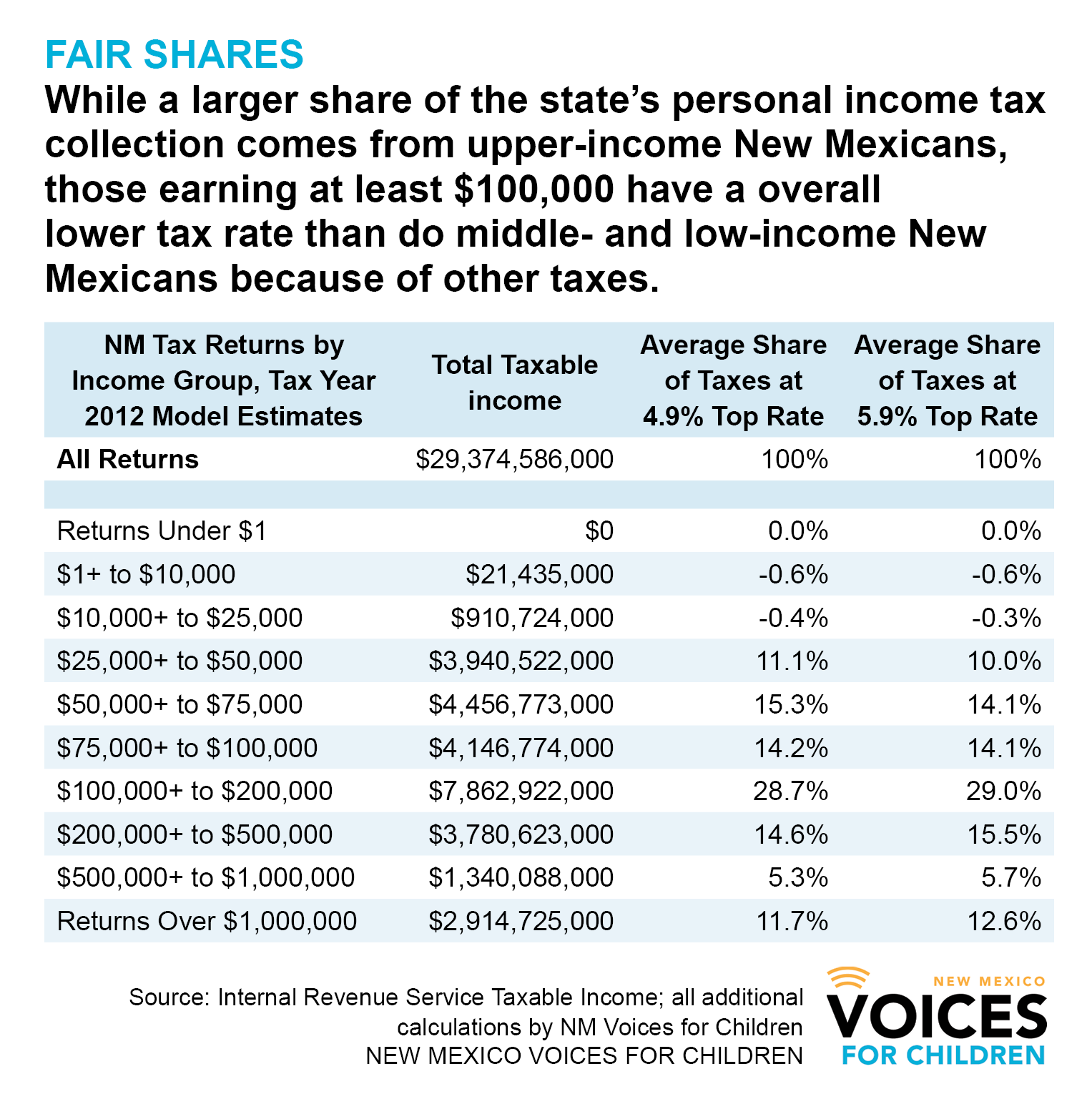by Gerry Bradley
January 6, 2015
It’s widely agreed that the poorest among us should not pay the highest tax rate, but in New Mexico (as in most states) they do. State and local taxes—particularly sales and property taxes (shown in the light blue and orange bars in the graphic below)—take up a higher percentage of incomes at the lowest end of the scale. That’s because the smaller your paycheck, the more of it you spend just on day-to-day living expenses—most of which are taxed.
The only place where the wealthier pay a higher rate than the poor is in the state income tax (the green bars). In fact, New Mexicans earning less than $29,000 pay no state income tax at all. But even with graduated income tax rates, middle- and low-income New Mexicans shoulder a greater share of the state’s tax responsibility. There is a very easy way for policy makers to address this inequity—simply make the state income tax more progressive.
Our state income tax system used to be more progressive. The top marginal personal income tax (PIT) rate used to be 7.2 percent, but it was cut by 40 percent to 4.9 percent in 2003, as a “job creation” scheme. The ‘marginal’ rate is the rate in statute. However, few people pay that rate because they can receive tax credits and take deductions. Those with the highest incomes tend to be able to claim the most deductions. For example, New Mexicans can deduct 50 percent of their capital gains income—most of which goes to the wealthy—from their taxable income. (More on this overly generous deduction in our next blog.)
Increasing the top marginal PIT rate from 4.9 percent to 5.9 percent—which, incidentally, is the same rate as the New Mexico corporate income tax—would shift more of the tax responsibility to those more able to afford it. It would also increase PIT revenues by 11 percent, raising more than $140 million in revenue for New Mexico’s education, health care and public safety needs. Raising the top marginal rate to 5.9 percent would partially reverse the 2003 tax cut, which has proven ineffective in creating jobs or raising median income.
The table below, based on the 2012 tax year, shows the average rate of income taxes paid by income group both at the current PIT rates and if the top marginal rate were raised to 5.9 percent. The average tax rate for those with incomes over $1 million increases very slightly from 4.8 percent to 5.7 percent.
The next table shows the share of personal income taxes paid by the top four income groups would increase by as much as a full percentage point as a result of increasing the top marginal rate to 5.9 percent from 4.9 percent. The share paid by the income groups earning less than $100,000 would decrease, also by as much as a full percentage point. This would shift some of the responsibility for paying income taxes upward.
Raising the top marginal rate from 4.9 percent to 5.9 percent would improve the progressivity of the New Mexico personal income tax. This action would also raise revenues from the personal income tax by about 11 percent. Since revenues from the personal income tax are expected to be $1.3 billion in fiscal year 2015, according to the revenue estimates published by the New Mexico Board of Finance, this proposed increase in the marginal rate would result in additional revenues of about $144 million. In fiscal year 2016 the revenue increase would be $148 million. This would be especially important given the huge loss of corporate income tax revenue the state is seeing (read more about that in this blog).
Gerry Bradley is Senior Researcher and Policy Analyst for NM Voices for Children. Reach him at gbradley@www.nmvoices.org.



